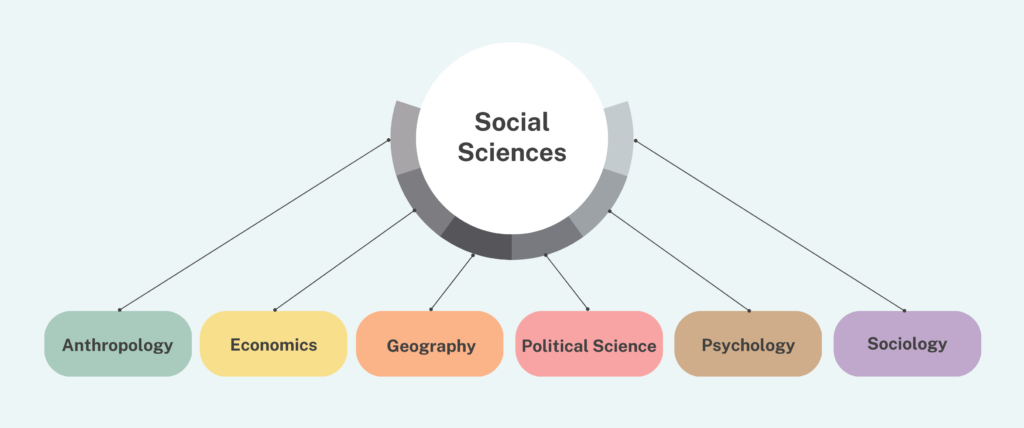6.3 Writing in the Social Sciences Disciplines
Natalie Boldt and Loren Gaudet
So, what exactly does it mean when we say, “Writing in the Social Sciences Disciplines”? Let’s start with the term “social sciences.” The social sciences is an overarching term for academic fields where the focus of study is society and/or human behavior. Anthropology, economics, geography, political science, psychology, and sociology are typically categorized as disciplines in the social sciences. Your major may well be in one of these disciplines, which means you are a member of this field!

It’s important to note, however, that within academia, lines and boundaries between disciplines are often blurry and porous, and the same discipline can be claimed by different fields simultaneously. By “porous,” we mean that different disciplines absorb relevant theories and approaches from other fields and incorporate that knowledge. For example, gender studies can belong to the social sciences and the humanities, while psychology is often categorized as both a social science and a science (like biological psychology, or neuropsychology). There are no hard and fast rules, and like genres, academic fields and disciplines shift and change over time and context.
So, if you’re taking a course, or courses, in the social sciences, we’ve written this chapter especially for you! We want you to be able to make this book work for you beyond the writing classroom, and support you as you encounter a (potentially) new set of writing tasks. Life is easier when you understand how communication situations work.
Although some of this material will be new, a lot of what we’ve already covered in this guide is relevant for writing in the social sciences. As part of the research for this chapter, we asked social sciences instructors at the University of Victoria what they looked for when reading undergraduate student writing. (We are certain that your instructors at your school also look for the following in undergraduate writing.) Good news! Everyone we surveyed and interviewed indicated that strong writing in their disciplines does all the things that we’ve been emphasizing in this guide. Instructors were most impressed by student work that:
- has a clear argument;
- is well-structured (at the paragraph- and essay-levels);
- has a clear audience in mind and is written for that audience;
- integrates relevant sources and enters into conversation with those sources.
Argument, audience, structure—some of the key topics of this guide! So breathe deeply and rest assured: you’re in good hands. And consider returning to the other chapters while you’re working your way through your social sciences courses. In the meantime, let’s get a sense of some of the generic conventions of social science writing.

